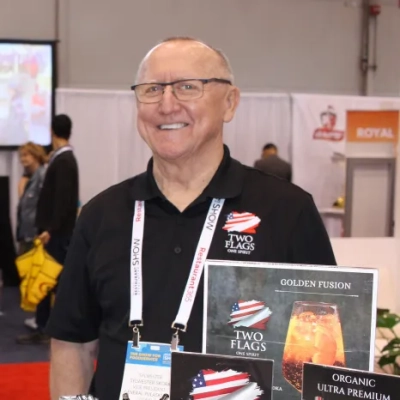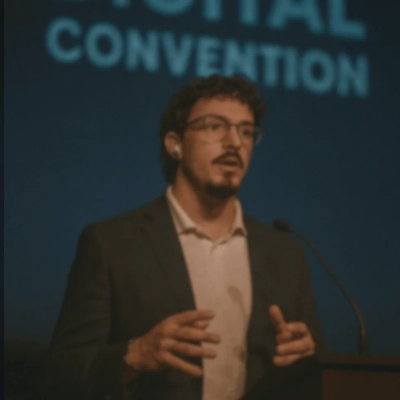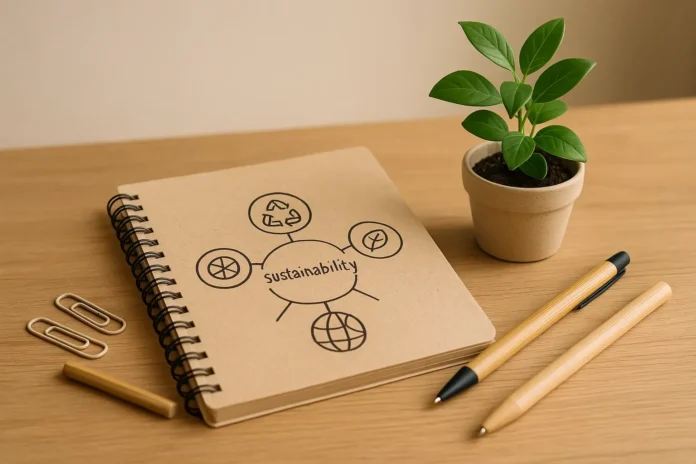Eco-Friendly Idea Validation: Impact on Audience Perception
Discover how sustainable product development affects audience perception with expert-backed strategies. This article examines how durable design establishes trust, environmental optimization creates appeal, and impact-focused product models strengthen customer connections. Industry specialists share proven approaches for eco-friendly idea validation that genuinely resonates with today’s environmentally conscious consumers.
- Ocean Impact Model Creates Community Around Products
- Future-Proof Designs Appeal to Mission-Driven Organizations
- Organic Certification Differentiates Premium Vodka Brand
- Responsible Device Recycling Creates Emotional Connection
- Circularity Filters Innovation and Strengthens Market Position
- Digital Testing Reduces Waste While Gathering Feedback
- Design for Endurance Builds Trust and Referrals
- Digital Sustainability Concept Attracts Eco-Conscious Clients
Ocean Impact Model Creates Community Around Products
One way we incorporated sustainability into our idea validation was by testing whether our audience connected not just with the product itself, but with the impact model behind it. From the start, our swim shorts were made from recycled ocean plastic, and we decided to pair every short with seaweed planting. In early conversations and surveys, we noticed that people weren’t just interested in the material story — they wanted to feel part of a community taking small but tangible steps for the ocean. That insight shaped how we position Blauw today, where sustainability is less about a sales pitch and more about an authentic way of building connection.

Future-Proof Designs Appeal to Mission-Driven Organizations
Through 30 years of architecture practice, I learned that sustainability isn’t just about green materials — it’s about designing spaces that adapt and endure. When we were designing an educational building for a ministry in Ghana (remotely), I made the founder sit through extensive sessions about long-term operational costs versus upfront savings.
Instead of pitching trendy eco-features, I focused on passive solar design and natural ventilation systems that would work for decades without complex maintenance. The client initially wanted flashy solar panels, but I showed him how proper orientation and window placement could cut cooling costs by 40% with zero ongoing tech support needed in rural Ghana.
This approach completely shifted how mission-minded organizations view our firm. They stopped seeing us as just architects and started referring to us as “the people who think 20 years ahead.” Our non-profit clients now specifically seek us out because they know we’ll design buildings that won’t burden them with surprise maintenance costs or energy bills that eat into their program budgets.
The validation came through word-of-mouth referrals increasing 60% among mission-driven clients. These organizations talk to each other constantly, and they started telling peers we were the firm that actually understood their financial constraints and long-term operational realities.

Organic Certification Differentiates Premium Vodka Brand
I built my company around USDA organic certification from day one, which forced me to validate everything through a sustainability lens. When testing our market fit, I found customers weren’t just buying premium vodka — they were buying clean ingredients they could trust.
The organic certification became our biggest differentiator during validation. Potential customers consistently chose our $19.99 bottle over $40+ competitors once they learned we’re gluten-free with zero additives. The Beverage Testing Institute’s “Exceptional” rating proved our sustainable approach didn’t compromise quality.
Our Polish-American heritage story resonated strongest when tied to traditional, chemical-free production methods at the historic Old Distillery in Rawicz. Customers saw authenticity in our 5x distillation process using organic Dankowski rye and mountain spring water — not just marketing speak.
The sustainability angle completely shifted how Chicagoland retailers positioned us. Instead of competing on price against mass-market brands, we became the premium organic option that delivers luxury quality without the luxury markup. Our 250+ retail locations now market us as the clean vodka choice.

Responsible Device Recycling Creates Emotional Connection
We ran early tests where we asked people not just if they liked the convenience of trading in an old phone, but if knowing it would be reused or recycled responsibly made a difference. It did. The feedback was stronger than we expected. People wanted the assurance their device wouldn’t end up in a landfill.
That shaped how we positioned the service. We didn’t lead with sustainability in the past, but after seeing the reaction, it became clear it wasn’t just a nice-to-have. It was a trust factor. It gave people a reason to feel good about the transaction beyond the cash in hand. And that shifted perception. What could have been just another resale option became something with real purpose attached to it.
Circularity Filters Innovation and Strengthens Market Position
During idea validation, we evaluated resource regeneration potential alongside utilization. Concepts fostering circularity advanced further confidently. Projects draining ecosystems disproportionately were firmly reconsidered. This disciplined process prevented short-term exploitation disguised as opportunity. Sustainability became a rigorous filter for innovation decisions consistently.
Target audiences deliberately saw responsibility interwoven with entrepreneurial creativity. They valued seeing businesses consider planetary regeneration alongside profitability. This dual consideration distinguished us noticeably within competitive markets. Perception improved because authenticity resonated deeply with conscious buyers. Sustainability validated not just ideas but relationships.
Digital Testing Reduces Waste While Gathering Feedback
When validating new ideas, sustainability has always been a key consideration, both in terms of environmental impact and long-term value for families. One approach we often take is assessing partnerships and products based on their overall sustainability. Focusing on offerings that are designed to last, responsibly made, or thoughtfully packaged has helped signal to our audience that we care about more than just convenience.
We also lean on digital-first testing whenever possible. Piloting ideas through newsletters, online surveys, or social media reduces waste and allows us to gather feedback from our community efficiently. Parents respond positively when they see that we’re trying to minimize unnecessary consumption while still providing useful resources.
Another way we approach sustainability is through the content we create. Sharing tips on mindful parenting, long-lasting products, or simple eco-friendly practices helps families make more informed decisions without adding extra strain on resources. It also reinforces the idea that small, thoughtful choices can have a meaningful impact over time.
Other strategies we’ve explored include virtual events instead of physical ones, highlighting locally made or thoughtfully sourced products, promoting second-hand or reusable options, supporting energy- and resource-conscious solutions, and regularly reviewing the environmental footprint of our initiatives. Each of these steps has strengthened trust with our audience, showing that Canadian Parent is committed to supporting families in a way that aligns with sustainable values.

Design for Endurance Builds Trust and Referrals
When validating new products or services, I tested them first through their lifespan impact instead of cost or convenience. It meant asking how much waste they prevented, how easily they could be repaired, and whether their materials held up without replacement. That single filter quickly separated flashy ideas from practical ones. It also influenced supplier partnerships, since I only moved forward with those willing to back their products with measurable longevity. Customers picked up on that instantly. They trusted that every recommendation came from long-term thinking rather than short-term gain, which built credibility faster than any marketing pitch.
The interesting part was how perception shifted once sustainability was built into the idea itself instead of being tacked on later. Homeowners felt like they were part of something responsible, and that pride carried into referrals. It showed me that sustainability is not just environmental — it is emotional. People respond to honesty, and when you design for endurance, that honesty shows. In the end, that validation step became both a filter and a sales advantage.

Digital Sustainability Concept Attracts Eco-Conscious Clients
One way we brought sustainability into idea validation was by testing how clients responded to the concept of “digital sustainability.” Instead of only pitching website optimizations as speed or SEO improvements, we framed them as reducing digital waste — lighter sites that load faster and consume less energy. The reaction was immediate: clients saw it as both a performance benefit and an ethical choice. It positioned us as forward-thinking and gave us an edge with eco-conscious businesses who might have overlooked us otherwise.




